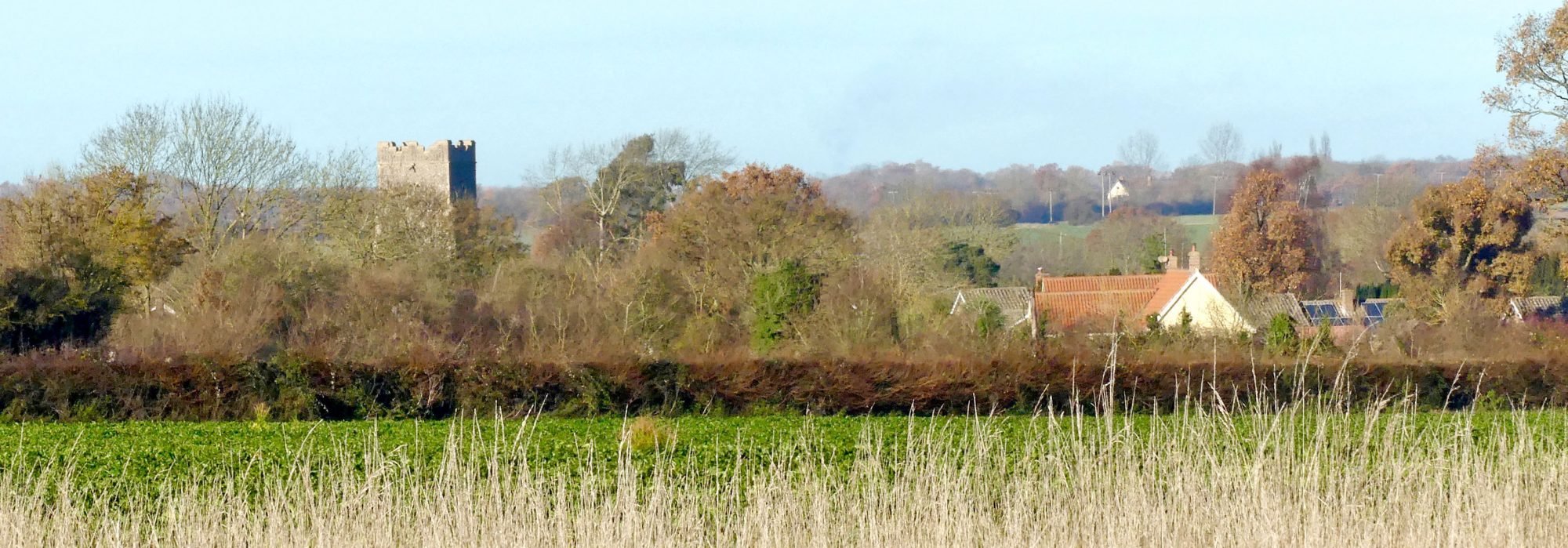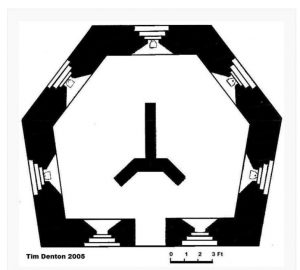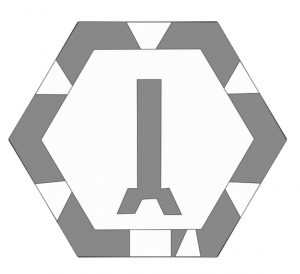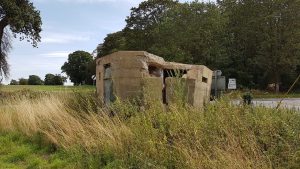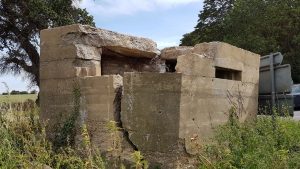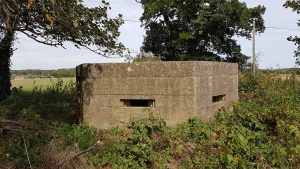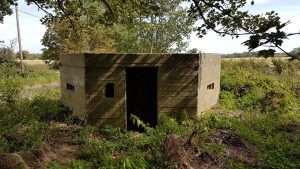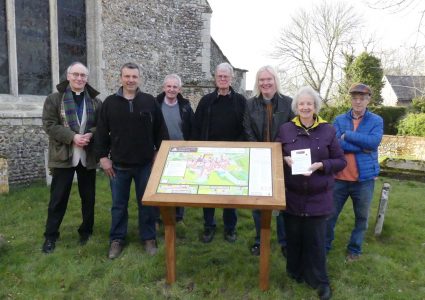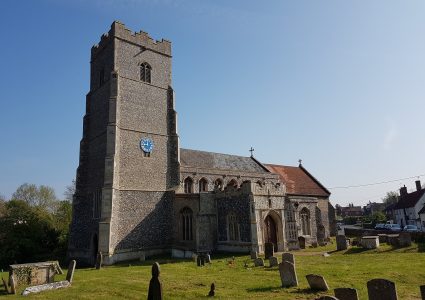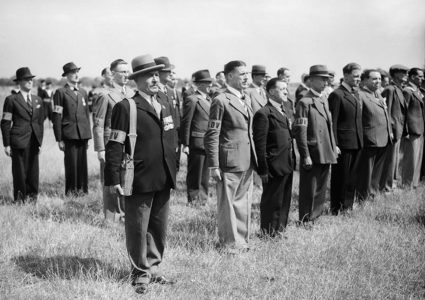The Threat of Invasion towards the end of 1939 and in 1940 was thought to a very real prospect, especially after the fall of Dunkirk in June 1940. As a result, the government formed the Home Guard and decided that in the event of an invasion, there was a requirement to delay and try to hold back the enemy using defences, manned by the Regular Army and the Home Guard. The purpose of these defensive positions was simply to delay the invaders until reinforcements could be brought up to the front.
There were two types of defences proposed. The first were described as “Nodal Points” and were usually towns and villages where effective defensive positions could easily be created using the existing buildings. One of the local “Nodal Points” was Ixworth. Barbed wire was erected around the perimeter of the town, roadblocks were constructed, 3 pillboxes were constructed on the A143 and machine gun positions were constructed, all intended to slow the enemy down in the event of an invasion.
The second type of defence took the name of “Stop Lines”. These were a series of heavily fortified strong points that cut a swathe through the countryside, linking “Nodal Points” and natural obstacles such as rivers with pillboxes, barbed wire and anti-tank ditches. One of these “Stop Lines” ran through Elmswell to Ixworth and beyond, following the line of the River Blackbourne and the A1088. Today, evidence of this strategic defensive position built some 78 years ago can be seen at the Stowlangtoft Cross Roads in the form of the two pillboxes.
In Elmswell the Eastern Command Corps “Stop Line” ran through the village from Wetherden Road to Cross Street and along Church Road, before making its way across the fields behind the Almshouses and the church to Norton and then along between the River Blackbourne and the A1088 through Stowlangtoft to Ixworth. This was one of the four “Stop Lines” running through Suffolk and was known as Line D. It started on The Orwell, ran through Ipswich, Needham Market, Stowmarket, Elmswell, Ixworth, Thetford and on to the natural obstacle of The River Ouse in Norfolk.
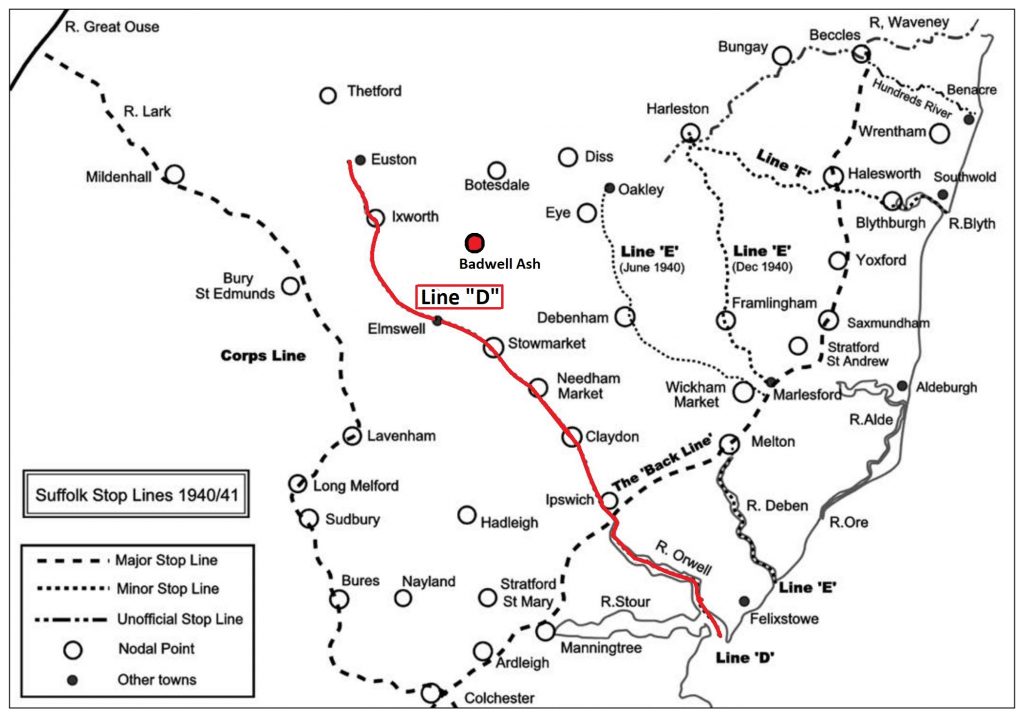
Even today, some evidence exists of the “Stop Line” between Elmswell and Norton. Along the Elmswell to Thurston section of the railway line between an embankment and a cutting, which would have been a weak defensive position, there are still some “Dragons Teeth” anti-tank blocks as can seen in the photo.
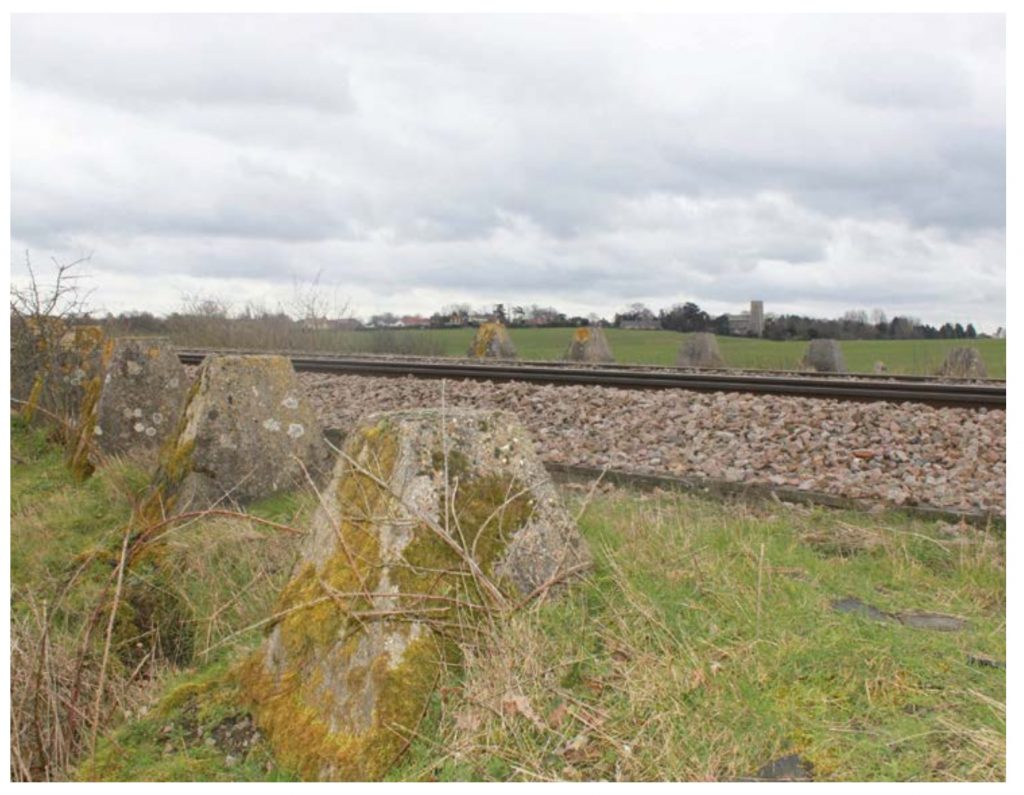
“Dragons Teeth” anti-tank obstacles adjacent to the railway between Elmswell and Norton.
The pillboxes seen at the junction of the Badwell Ash to Pakenham Rd. where it joins the 1088 are also a part of this “Stop Line” and although they would have been manned by units of the Regular Army they could have conceivably also been manned, from time to time by the men from Badwell Ash Home Guard.
Due to the fact that “Stop Line” D was considered to be a subsidiary line in comparison to the Corps Line shown on the plan, most of the pillboxes were constructed to be bullet proof and not built to be shell proof. Given that the rolling countryside of Suffolk was ideal “tank country”, they would have given little or no protection against the 75mm gun of the Nazi’s Panzer IV and V and even less protection from the 88mm gun on the Tiger and King Tiger
The majority of the pillboxes built along “Stop Line” D were either Type 22 or 24, neither of which were a guarantee of safety from an attack from a tank or field gun.
The two types had very similar layout plans. The walls were between 30cm (12”) and 60cm (24”) thick usually with rifle embrasures in five of the six sides and the door on the sixth with a small shaped wall internally to act as an anti-blast wall.
The Pillboxes found on the cross roads and at the “Y” junction at Stowlangtoft both seem to be Type 22 with one being in much better condition than the other! The damage to the pillbox at the cross roads seems to be as a result of poor initial construction,
A Type 22 Pillbox at the Stowlangtoft “X” Roads – Now Demolished
A Type 22 Pillbox at the Stowlangtoft “Y” Junction
To try and deceive the enemy, pillboxes were often camouflaged or disguised as something else! Some in Suffolk were disguised as a bus stop, a pile of sugar beet, a chaff heap, even a gentlemen’s’ toilet! One in Ixworth was adjoining an existing house and was made to look like an outbuilding, complete with a pitched roof!
By late 1942, the threat of invasion had subsided and the defensive role of the pillbox had become almost irrelevant. After the war many were demolished and many, many just fell into disuse, having no alternative use and difficult to demolish. Today, some have become Listed Buildings and as the years pass, those that are left have become a source of fascination. There is even a website dedicated to pillboxes http://www.pillbox-study-group.org.uk/
